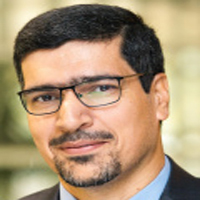Formulation of an optimized Cropping pattern in order to manage groundwater level changes in Shahriar Plain
Optimal cultivation patterns are necessary for the sustainable development of agriculture and the protection of land and water resources, and the need for it has deepened. In the context of sustainable agricultural development, the optimization of the cultivation pattern, in addition to the economic benefits, should also follow the subsequent environmental effects. Due to the limitation of water resources in different regions of the world, joint use of surface and groundwater has become very important. Optimizing the joint use of surface and groundwater has become a necessary contribution to sustainable irrigation methods, and due to this, there is a need to improve methods of joint use of surface and underground water. The purpose of this research is to use a new comprehensive structure of multi-objective simulator-optimizer in order to simultaneously formulate the optimal cultivation pattern and the optimal allocation of surface and groundwater resources for the integrated management of the water resources system and solving complex water resources problems.
The study area in this research is Shahriar Plain in Tehran Province, Iran. Shahriar Plain is located on the western outskirts of Tehran city. In this study, a multi-objective simulator-optimizer modeling pattern was prepared and for this purpose, it was first simulated using the groundwater modeling system (GMS) of the groundwater level. Then six scenarios including a 50 % increase in artificial recharge, 50 % increase in artificial recharge and 30 % reduction in consumption from exploitation wells, 50 % increase in artificial recharge and 40 % reduction in consumption from exploitation wells, 30 % reduction in consumption from exploitation wells, 40 % The reduction of consumption from exploitation wells, elimination of drinking and industrial exploitation wells and its impact on the aquifer was defined based on the groundwater level in order to optimally exploit the aquifer of the study area. After this step, the groundwater level was estimated using the artificial neural network (ANN) model. Finally, the two objective functions of income to cost and groundwater level changes were estimated based on the constraints related to the conditions of the desired area by a multi-objective genetic algorithm (NSGA-II).
The GMS model in a steady state was calibrated. The RMSE error was 0.71 meters and the maximum and minimum differences between observed and calculated values were calculated as 1.73 and 0.001 meters, respectively. The maximum amount of yield water in the calibration stage of the unstable state is 0.0976 and related to the northern regions of the area and due to the coarseness of the alluvial formations in these areas, and its minimum value is 0.0003 and related to the southern regions of the area. The results obtained from the model showed the RMSE error at this stage and the verification mode equal to 0.72 and 0.98 meters, respectively. Also, the budget resulting from the third scenario of the GMS was estimated to be 203 (MCM), which has increased by 313 (MCM) compared to the budget resulting from this model in the water year 95, and has caused an increase of the groundwater level by 13 meters. Therefore, the model has adequately simulated the groundwater flow in the aquifer. Also, the results of the optimization model showed the highest amount of optimal irrigation demand for Eslamshahr district at 66%, then Shahriyar at 20%, and finally Robat Karim at 14%. Optimal water demand volume and area under cultivation in the total state, have decreased by 36%, and the volume of groundwater consumption by 74 percent compared to the current conditions. The amount of optimal water consumption (surface water and groundwater) of agricultural products also shows the values of 36, 39, and 25% respectively in Shahriar, Eslamshahr, and Robat Karim districts, which according to this issue, water consumption in the agricultural sector is in optimal conditions compared to the current situation has decreased by 44 %. The highest parameter of the ratio of income to cost obtained is related to Shahriar district, then Robat Karim district and finally Eslamshahr district. The results of the simulator models show the groundwater level changes resulting from the third scenario compared to the neural network model by 11 m. Finally, Optimal cultivation pattern planning and exploitation of water resources compared to the third scenario of the model and the neural network model, was chosen as the pattern of optimal water planning.
Products such as vegetables, alfalfa, onions, grapes, pears, and pomegranates can be used more in the study areas, because the amount of income to cost and volume of water consumed have been suitable, and these factors have been very effective in increasing the net profit and changes in the groundwater level, and prevent the occurrence of crime and water complex problems. Also, optimal cultivation pattern planning and exploitation of water resources compared to the third scenario of the GMS and the neural network model, was evaluated as the selected optimal planning pattern of water resources. Therefore, by applying the desired research policies and optimal management and control of the cultivation pattern of agricultural products and available water resources, in addition to preventing the occurrence of crisis in water issues, environmental and economic problems can also be reduced.
-
Optimal Allocation of Irrigation Water Under Different Flow Scenarios Using Multi-stage Stochastic Programming by Emphasizing Economic Productivity
Leila Amanat.Behbahani, Mahnoosh Moghaddasi *, Hossain Ebrahimi,
Irrigation Sciences and Engineering, -
The effects of planting date on quantitative and qualitative yield of sunflower in Iran and the world: A meta–analysis
Mohsen Rezaei *, Mohammadnabi Ilkaee, Faiyaz Aghayari, Saeed Souphizadeh, Abdolmajid Mahdavi Damghani
Agriculture, Environment and Society, Summer- Autumn 2023 -
Analysis of different scenarios of using smart meter to increase the effectiveness of Groundwater Restoration and Balancing Plan using the Agent Base Model in Qazvin Plain
Hamid Rahmani, Ali Saremi *, Shahab Iraqi Nejad,
Journal of Hydrogeology, -
Optimizing the exploitation of the Shahryar plain aquifer by simulating the groundwater flow using the combined modeling method
, *, , Ali Saremi, Mohammadreza Ghafouri, Masoud Safavi, Ali Panahdar
Journal of Renewable Natural Resources Research, -
Investigating the effect of appropriate levels of artificial recharge and flood management in Shahriar Plain on groundwater resources
, *, , Ali Saremi, Mohammad Reza Ghafouri, Masoud Safavi, Ali Panahdar
Iranian Water Research Journal,





